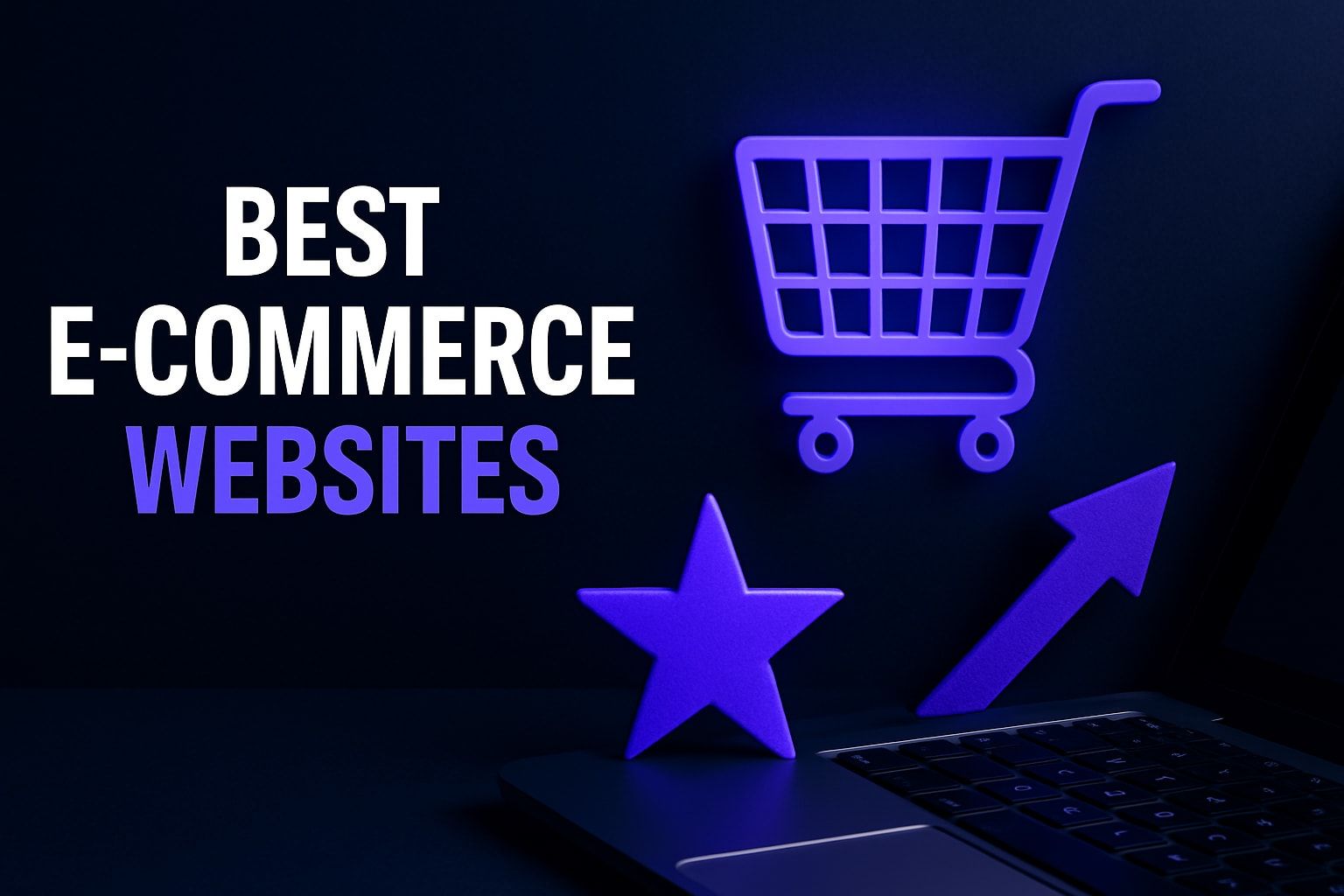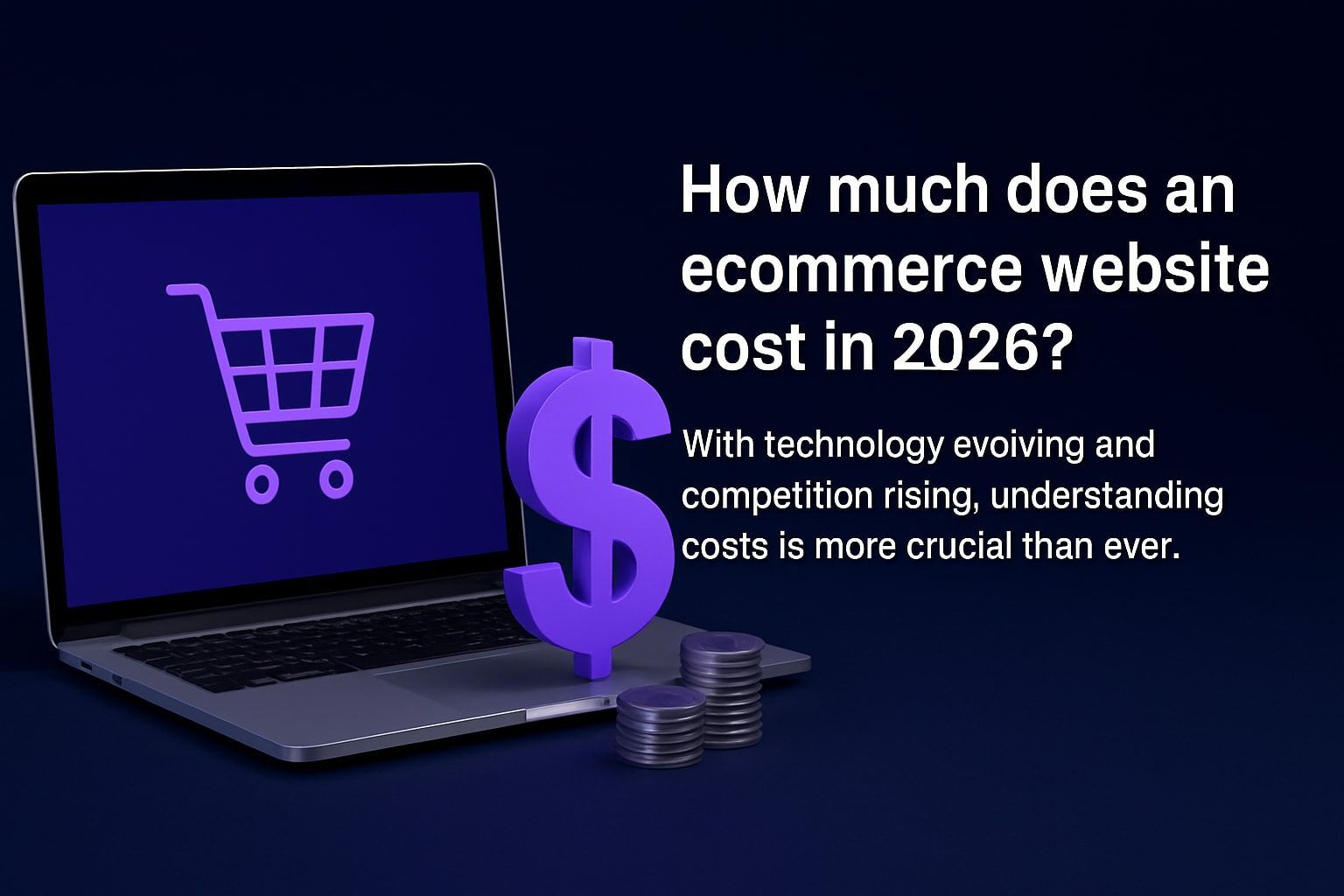How to Develop a website: A Complete Guide for Beginners (2025)
The digital world is expanding faster than ever, making it essential for everyone—from business owners to hobbyists—to develop a site that stands out in 2025.
What once seemed technical and overwhelming is now accessible to beginners thanks to powerful new tools and user-friendly platforms.
This step-by-step guide will break down every part of the process, making it simple to plan, build, and launch your own website.
Follow along for a clear, beginner-friendly roadmap that covers everything from initial planning to ongoing optimization.
You'll discover how to turn your ideas into a modern, high-performing website—no prior experience required.
Step 1: Planning Your Website
Before you develop a site, careful planning is your foundation for long-term success. This step transforms ideas into a focused project with clear direction. By mapping out goals, understanding your audience, and organizing your content, you ensure every decision supports your website’s success.

Defining Your Website’s Purpose and Goals
Every successful project starts with a clear purpose. Are you building a blog, launching an eCommerce store, or showcasing a portfolio? Setting specific goals helps you develop site features that truly matter. For example, a personal blog needs categories and comments, while an online store requires product pages and secure checkout.
Align your website’s goals with your target audience’s needs, not just your own ideas. According to Web Development Statistics 2025, 80% of thriving websites have a well-defined purpose from day one. This clarity guides every decision you'll make as you develop site structure and content.
Identifying Your Target Audience
Understanding who will visit your site shapes every aspect of its design and content. Begin with audience research—try surveys, competitor analysis, or create detailed personas. For instance, if you develop site for millennials interested in fashion, your tone, visuals, and features differ from a consulting site for professionals.
Demographics like age, interests, and tech-savviness influence colour choices, language, and even your navigation. The better you know your audience, the more effectively you can develop your site elements that truly engage them.
Competitor Analysis and Inspiration
Analyzing competitor websites reveals trends, best practices, and opportunities in your niche. Use tools like SimilarWeb or SEMrush to study design, features, and content strategies. Ask yourself: What makes top-performing sites stand out? Which features are must-haves if you develop your site for your chosen audience?
Take notes on layouts, color schemes, and interactive elements. Inspiration from successful competitors helps you avoid reinventing the wheel and ensures your site meets modern standards from the start.
Mapping Out Website Structure
A thoughtful website structure boosts both user experience and SEO. Start by sketching a sitemap—this visual outline organizes your main pages, like Home, About, and Contact. If you develop a site for a simple blog, you might only need five pages. For a complex eCommerce platform, plan for multiple sections and categories.
Wireframes and flowcharts help you visualize navigation paths and how users will move through your content. This step ensures your visitors always find what they need—and search engines can easily crawl your site.
Content Planning and Strategy
Effective content planning is key when you develop site. Decide on your core pages: Home, About, Services, Blog, and Contact are typical essentials. Next, plan content types—think text, images, video, or interactive features to keep visitors engaged.
For blogs, an editorial calendar helps you publish consistently. For eCommerce, product descriptions and high-quality images are musts. Strategic planning ensures your site launches with meaningful, well-organized content that supports your goals.
Step 2: Choosing the Right Website Development Tools
The tools you choose to develop your site in 2025 will shape your entire web journey. Whether you want a simple one-page portfolio or a robust online store, understanding the current landscape is crucial. With so many options now available, even beginners can confidently develop site without prior experience.
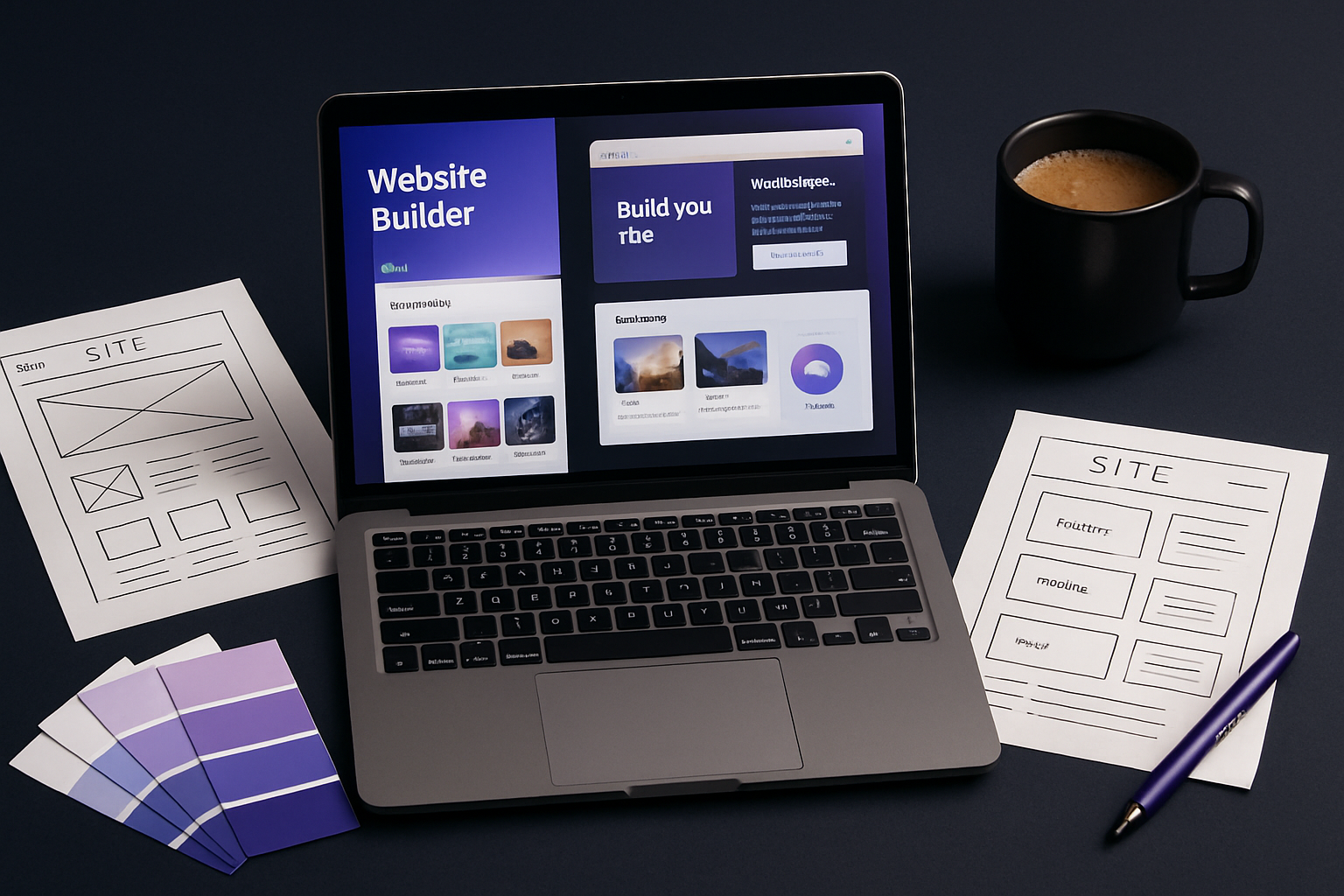
Overview of Website Building Options in 2025
In 2025, there are more ways than ever to develop a site, regardless of your technical background. You can choose between no-code website builders, content management systems (CMS) like WordPress, or custom coding for full flexibility.
No-code builders are ideal for those who want to launch quickly without technical hurdles. CMS platforms offer more customization, while coding from scratch is best suited for those with programming skills.
Here's a quick comparison to help you decide:
| Option | Ease of Use | Flexibility | Scalability |
|---|---|---|---|
| No-code Builder | Very High | Moderate | High |
| CMS (WordPress) | Moderate | High | Very High |
| Custom Coding | Low | Very High | Very High Unlimited |
Evaluate which path aligns with your goals before you develop site for the first time.
Evaluating Website Builders vs. Traditional Development
Did you know that 65% of new websites in 2024 used no-code platforms? Website builders are popular because they let you develop a site quickly, often using drag-and-drop interfaces. These platforms save time and minimize the learning curve, making web creation accessible to everyone.
Traditional development (using HTML, CSS, and JavaScript) offers maximum control but requires technical know-how and more time. For most beginners, starting with an AI-Powered Website Builder is a smart move—these platforms combine ease of use with the latest AI features to help you develop a site efficiently and professionally.
Essential Features to Look For
When selecting the best tool to develop a site, focus on features that boost both usability and long-term success. Look for mobile responsiveness, built-in SEO tools, a variety of templates, and strong customer support.
- Mobile-ready designs for every device
- Customizable templates for different industries
- SEO settings to help your site get found
- Integration options for analytics, social media, and eCommerce
Drag-and-drop editors are especially valuable for beginners who want to develop a site without touching a line of code.
Security and Hosting Considerations
Security and hosting are the backbone of every successful attempt to develop a site. Always choose a platform that offers SSL certificates to protect your visitors' data. Regular backups, uptime guarantees, and reliable hosting (shared, cloud, or managed) are must-haves.
Poor hosting can lead to slow load times and hurt your SEO. Make sure your chosen method to develop a site includes robust security and performance features.
Budgeting for Your Website
Budgeting is a critical step when you develop your site. Typical costs include the domain name, hosting, your chosen builder or CMS, and any premium features or plugins.
Here's a quick breakdown:
- Domain: $10–$20/year
- Hosting: $30–$100/year
- Website builder/CMS: Free to $300/year
- Premium features: Varies
DIY website builders are often more affordable than hiring developers, letting you develop a site on a budget while maintaining professional quality.
Step 3: Designing Your Website
Designing your website is where your vision comes to life. To develop a site that stands out and performs well, you need a thoughtful approach to templates, branding, user experience, and more. Let’s explore the core steps to create an engaging, modern design.
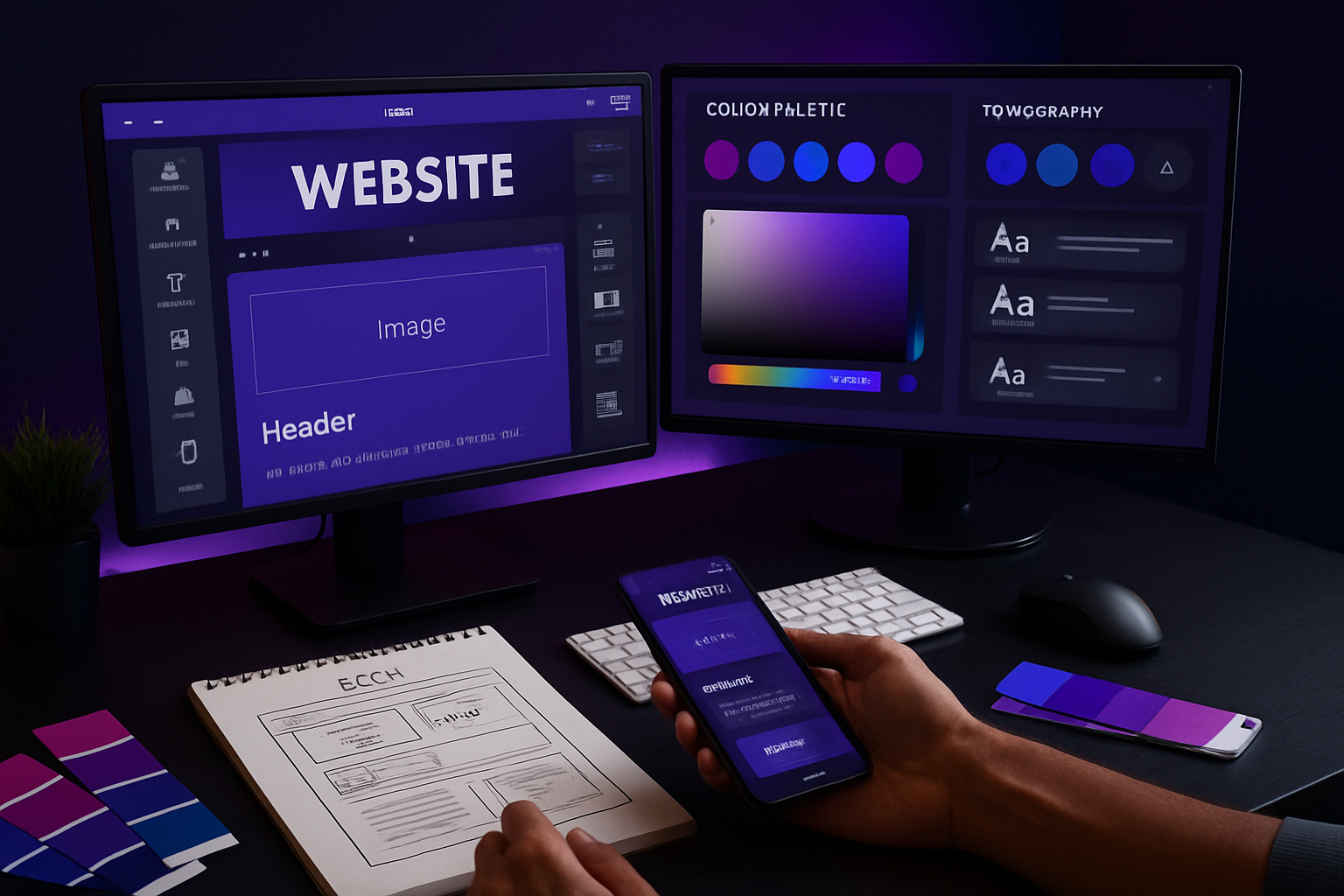
Choosing the Right Template or Theme
The template or theme you select sets the foundation for your entire website. For beginners looking to develop a site quickly, templates offer a shortcut to professional design without needing advanced skills.
Templates come in many flavors—portfolio, blog, eCommerce, and more. Choose one that fits your site’s purpose and audience. Customization is key: look for templates with flexible layouts, color options, and built-in features.
Curious about the latest options? Explore Website Templates for 2025 to see modern, responsive designs tailored to different needs. The right template makes it much easier to develop a site that looks polished from the start.
Branding Basics: Logo, Colors, Fonts
Strong branding helps your site gain credibility and makes it memorable. When you develop a site, start with a clear logo, a consistent color scheme, and readable fonts.
Tools like Canva and Coolors make it simple to design a logo or select a color palette. Remember, color psychology can influence how visitors feel about your site—blue often suggests trust, while orange feels energetic.
Choose fonts that are easy to read across devices. Use no more than two or three font styles to keep things professional. Good branding ensures your site is instantly recognizable.
User Experience (UX) and Navigation
User experience is critical if you want to develop a site that people love to use. Focus on simplicity and intuitive navigation. Visitors should find what they need in just a few clicks.
Effective navigation means clear menus, logical page order, and accessible links. Mobile-first design is a must—most users will visit from their phones. Data shows that 94% of first impressions are based on design, so UX can make or break your site.
Test your navigation with friends or family. If they can’t find key pages easily, simplify your menu or reorganize your layout.
Visual Content and Imagery
Images and graphics breathe life into your site. Whether you use stock photos, custom shots, or AI-generated visuals, quality matters. High-resolution images make your site look professional, but they must be optimized for speed.
To develop a site that loads quickly, compress images and use modern formats like WebP. Use descriptive alt text for every image to boost SEO and accessibility.
Before launching, compare your site’s speed with and without optimized images. You’ll notice a big difference in performance and user satisfaction.
Responsive and Mobile-First Design
With over 60% of web traffic coming from mobile devices, your design must adapt to all screen sizes. When you develop a site today, mobile-first thinking is essential.
Use responsive templates and test your site on various devices. Tools like Google’s Mobile-Friendly Test can help you catch issues early.
Responsive design also improves your search ranking. A site that looks great on any device keeps visitors engaged and encourages them to return.
Accessibility and Inclusive Design
Accessibility ensures everyone can use your site, including people with disabilities. Add alt text to images, use high-contrast colors, and enable keyboard navigation.
Follow ADA guidelines and use tools like WAVE or Axe to audit your design. Accessible sites reach a wider audience and show your commitment to inclusivity.
Personalization and Interactive Elements
Interactive features make your website dynamic and engaging. Add contact forms, chatbots, or personalized greetings to connect with visitors.
For eCommerce, consider product recommendations or wish lists. These elements encourage users to interact, stay longer, and return to your site.
Personalization helps you develop a site that feels unique and tailored to each visitor’s needs.
Step 4: Building Your Website Step-by-Step
Ready to roll up your sleeves and actually develop your site? This step-by-step guide will walk you through every essential action, from securing your domain to prepping for launch. Let’s break down the process into clear, manageable tasks, so you can confidently build a professional website, even as a complete beginner.
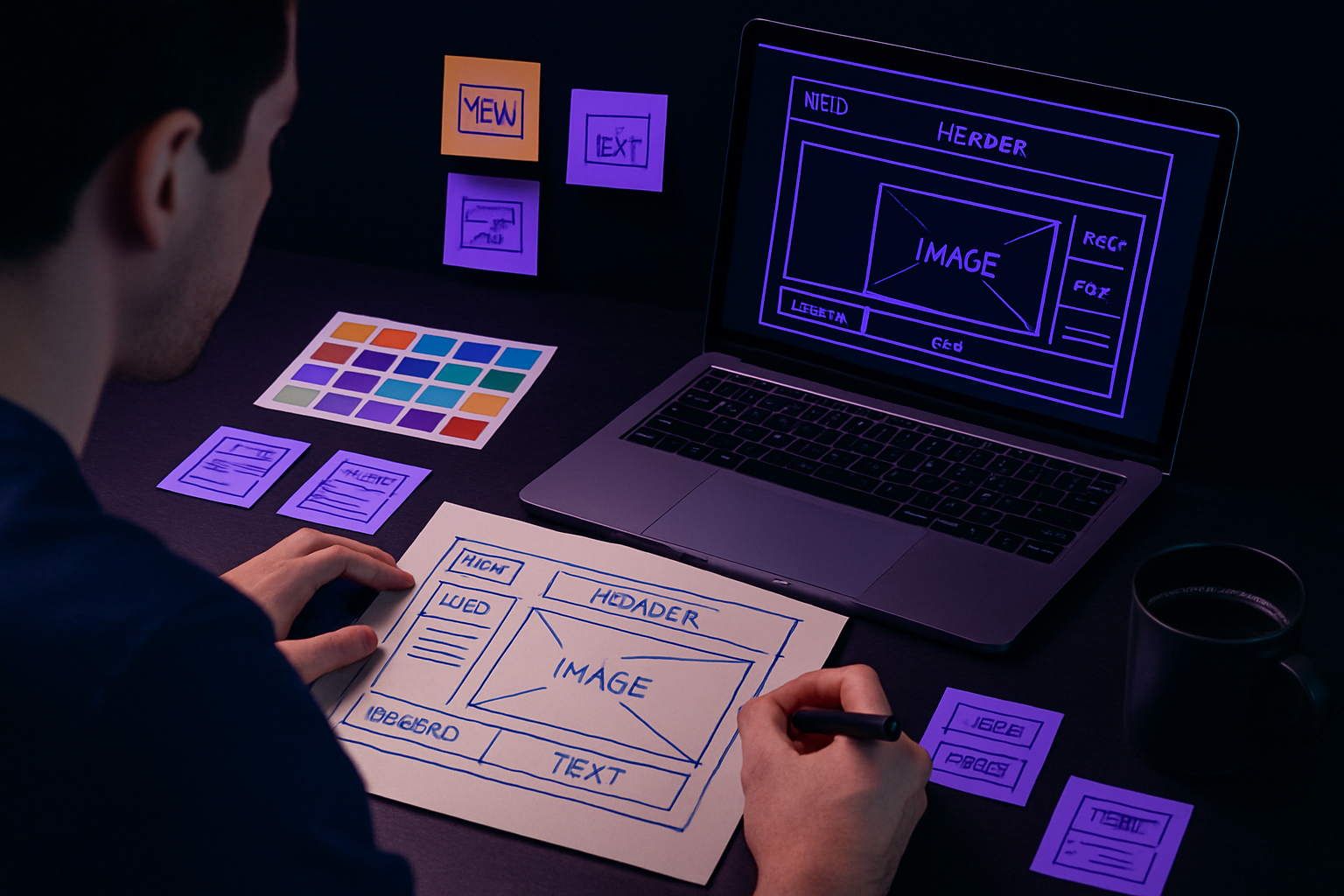
Setting Up Domain and Hosting
Your journey to develop a site starts with choosing a domain name. A domain is your website’s address—think of it as your digital street name. Aim for something short, memorable, and relevant to your brand. Avoid numbers or hyphens that can confuse visitors.
After picking your domain, select a hosting provider. Hosting is where your website’s files live online. Most website builders offer integrated hosting, but if you’re using a CMS like WordPress, you’ll need to choose between shared, cloud, or managed hosting. Prioritize uptime, support, and scalability.
Register your domain through reputable registrars. Then, connect it to your hosting platform. This is the foundation step whenever you develop site.
Installing or Launching Your Website Platform
Once your domain and hosting are ready, the next step is to install or launch your website platform. For beginners, website builders provide a guided onboarding flow. Simply sign up, pick a template, and you’re set to develop your site with minimal technical overhead.
If you’re using WordPress or another CMS, most hosts offer one-click installations. Follow the prompts, create your admin account, and log in to your dashboard. This platform is the control center where you’ll manage every aspect as you develop your site.
Take a moment to familiarize yourself with the dashboard layout. Explore the available tools and settings before moving forward.
Adding Core Pages and Content
Now it’s time to develop your site content and structure. Start by creating your core pages: Home, About, Services or Shop, Blog, and Contact. Each serves a specific purpose—Home welcomes visitors, About shares your story, Services or Shop lists offerings, Blog provides updates, and Contact enables communication.
Draft concise, engaging copy for each page. Use headings, short paragraphs, and bullet points for readability. Incorporate images or videos to enhance appeal.
Plan your content layout using wireframes or page builders. As you develop your site, remember to align each page’s content with your audience’s needs and your site’s main goals.
Integrating Essential Features and Plugins
To develop site functionality, integrate essential features. Add a contact form so visitors can reach you easily. Include social media buttons for sharing and following. Set up analytics (like Google Analytics) to track visits and user behavior.
Install plugins or widgets to enhance security, enable SEO, or add interactive elements. For example, cookie consent banners help ensure privacy compliance.
Choose only the plugins you need to keep your site fast and secure. As you develop your site, test each feature to make sure it works seamlessly for your users.
Customizing Design and Layout
A unique look and feel is key when you develop your site. Use your builder's drag-and-drop editor or theme customizer to adjust colors, fonts, and layouts. Upload your logo and select imagery that matches your brand identity.
Experiment with different sections, like testimonials, FAQs, or featured products. Keep navigation simple and user-friendly. Preview your site on desktop and mobile to ensure consistency.
Don’t be afraid to tweak templates to better fit your vision. A well-customized site will make a stronger impression as you develop your site.
Testing Functionality and Fixing Errors
Before launch, thoroughly test your site. Click every link, fill out every form, and check all navigation menus. Use your platform’s preview or staging features to simulate real user interactions as you develop your site.
Test responsiveness on different devices and browsers. Fix broken links or layout issues. Tools like the Google Mobile-Friendly Test can help you catch problems early.
Create a checklist to track your progress:
- All pages load correctly
- Forms submit successfully
- Images display properly
- No typos or broken links
A polished site is the result of careful testing as you develop.
Preparing for Launch
You’re almost ready to launch! Before your launch your site for public eyes, review every detail. Proofread content, double-check visuals, and set up basic SEO: page titles, meta descriptions, and alt text for images.
Back up your site and enable SSL for security. Set up analytics to monitor performance from day one. For more guidance on optimizing your new site for search engines, check out these Essential SEO Tools and Guides.
Announce your launch on social media or via email. When you developyour site with thorough preparation, you set the stage for a successful debut.
Step 5: Launching and Optimizing Your Website
Going Live: Publishing Your Site
After working hard to develop site content and design, it’s time to make your website public. Most website builders and CMS platforms offer a simple "publish" button, turning your work into a live website within minutes.
Before you launch, double-check that all pages are complete, links work, images display correctly, and forms function as intended. Announce your launch on social media and through email to drive your first visitors. Remember, how you develop site launch strategies can set the tone for future growth.
SEO Fundamentals for Beginners
Search engine optimization is essential if you want to develop site visibility and attract organic traffic. Start with on-page SEO: use relevant keywords in page titles, headings, and meta descriptions. Add descriptive alt text to images and structure content with clear, logical headings.
For technical SEO, create a sitemap, set up robots.txt, and make sure your site uses SSL. Free tools like Google Search Console and Yoast can help you monitor and improve your SEO. According to Web Design Statistics and Trends 2025, sites with solid SEO foundations see significantly higher engagement and conversion rates.
Performance Optimization
A fast-loading website is critical when you develop site experiences for users. Slow pages drive visitors away and hurt your search rankings. Compress images, enable caching, and use a content delivery network (CDN) to speed up load times.
Sites loading in under two seconds see much better conversion rates. For more insights on why speed matters and the latest performance trends, check out Web Development Trends and Statistics 2025. Always test your site’s speed before and after launch to ensure your develop site efforts aren’t wasted on a sluggish experience.
Security Best Practices
Protecting your site and visitors is a must when you develop site projects. Always use SSL encryption, keep your software updated, and schedule regular backups. Install anti-malware plugins and set up automatic monitoring to catch threats early.
Don’t forget to use strong passwords and limit admin access. If you develop site security strategies from the start, you’ll avoid headaches down the line and build trust with your users.
Analytics and Tracking
To truly develop site performance, you need to measure what matters. Set up Google Analytics to track visitor numbers, bounce rates, and user behavior. Use these insights to identify what’s working and what needs improvement.
Key performance indicators (KPIs) like conversion rates, average session duration, and most popular pages will guide your future updates. When you develop site analytics habits early, you’ll always know how your website is performing.
Collecting Feedback and Iterating
Your first launch is just the beginning when you develop site projects. Gather feedback through surveys, heatmaps, or direct user comments. Even small tweaks based on real user input can make a huge difference.
Use tools like Hotjar or Google Forms to collect data and review it regularly. Continuous iteration is the key to long-term success as you develop site improvements, keeping your website fresh, relevant, and user-friendly.
Step 6: Growing and Maintaining Your Website
Building your website is just the beginning. To truly succeed and develop site that stands the test of time, you need a plan for growth and ongoing maintenance. Let’s break down the essential steps for keeping your site active, engaging, and ready for anything the web throws your way.
Content Updates and Blogging
Regularly updating your content is vital if you want to develop site authority and keep your audience returning. Fresh content signals to search engines that your site is active, improving your SEO over time.
Use an editorial calendar to plan blog posts and page updates. This keeps your publishing consistent and helps you brainstorm new ideas. Consider mixing formats: how-to articles, news updates, and multimedia posts all serve different user needs.
- Schedule weekly or monthly updates.
- Repurpose older content with new insights.
- Encourage guest contributors for fresh perspectives.
Staying committed to content creation ensures your site remains relevant and valuable.
Expanding Features and Functionality
As your needs evolve, it’s smart to expand your site’s capabilities. Many who develop site for the first time start with basics, then add features like eCommerce, booking tools, or membership areas.
Begin by identifying what your audience wants next. For example, if you plan to sell products, explore eCommerce Website Solutions that integrate seamlessly with your platform. This can transform your site into a powerful online store without starting from scratch.
- Add event calendars for community sites.
- Introduce chatbots for instant support.
- Integrate appointment booking for service providers.
Scaling features keeps your site competitive and useful.
Building Online Presence and Community
To develop site influence and traffic, focus on building an engaged online community. Social media integration, email newsletters, and forums are powerful tools for connecting with your audience.
Start by adding social share buttons and links to your profiles. Launch a newsletter to deliver updates and exclusive content. Consider a forum or comment section to encourage interaction.
- Offer incentives for newsletter sign-ups.
- Use polls and surveys for feedback.
- Highlight user-generated content.
A thriving community turns visitors into loyal supporters.
Advanced SEO and Marketing Strategies
Once you develop site basics, step up your marketing game to drive more traffic. Advanced SEO tactics like link building and local optimization can boost your visibility.
Research keywords relevant to your niche and update your content accordingly. Collaborate with influencers or guest post on related blogs to expand your reach.
- Build quality backlinks.
- Optimize for voice and mobile search.
- Use analytics to refine your approach.
With the right strategy, you’ll attract more visitors and convert them into customers.
Website Maintenance and Monitoring
Keeping your website healthy is a must for anyone who wants to develop site that performs well long-term. Routine maintenance prevents issues and keeps things running smoothly.
Set a schedule for updates, security scans, and backups. Tools like uptime monitors alert you if your site goes down, so you can act fast.
| Maintenance Task | Frequency | Tools |
|---|---|---|
| Software updates | Monthly | CMS/Built-in tools |
| Backups | Weekly | Hosting panel |
| Security scans | Monthly | Sucuri, Wordfence |
| Uptime monitoring | Ongoing | UptimeRobot |
Proactive care minimizes downtime and protects your investment.
Scaling Your Website for Growth
As your website grows, you may need to scale its infrastructure and features. If you develop site that attracts more visitors, consider upgrading your hosting plan or moving to a more robust platform.
Add new sections, pages, or interactive features as your audience expands. Monitor your site’s performance and be ready to adapt.
- Upgrade to managed hosting for better speed.
- Add languages for global reach.
- Migrate to advanced platforms as needed.
Scaling ensures your website stays fast, secure, and relevant.
Staying Up-to-Date with Web Trends
The digital landscape changes rapidly. To develop site that continues to impress, stay informed about the latest design, SEO, and technology trends. Follow industry blogs, experiment with new tools, and learn from the best.
For up-to-date insights, check out Web Design Statistics 2025 to see how trends like mobile-first design and AI are shaping the web.
- Subscribe to newsletters in your niche.
- Attend webinars or virtual conferences.
- Test new features before full rollout.
Being proactive helps you adapt quickly and keeps your site ahead of the curve.
Now that you’ve seen how simple it can be to turn your ideas into a professional website—without any coding or tech headaches—it’s time to take that first step. With tools like Avantiy, you don’t have to wait weeks or become a designer overnight; you can use drag-and-drop templates, AI-powered content, and built-in SEO to launch your site in just hours. Whether you’re starting a blog, a portfolio, or your first online store, everything you need is at your fingertips. Ready to bring your vision to life?
Start Building Your Website Today and see how easy it can be!
Start building your new website today
No credit of debit card required start building today

